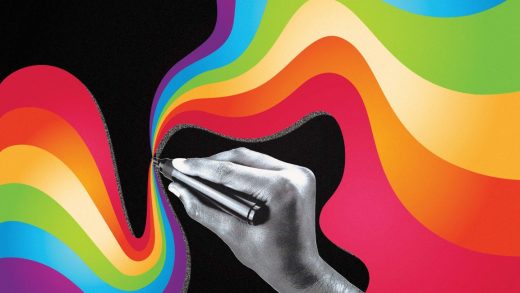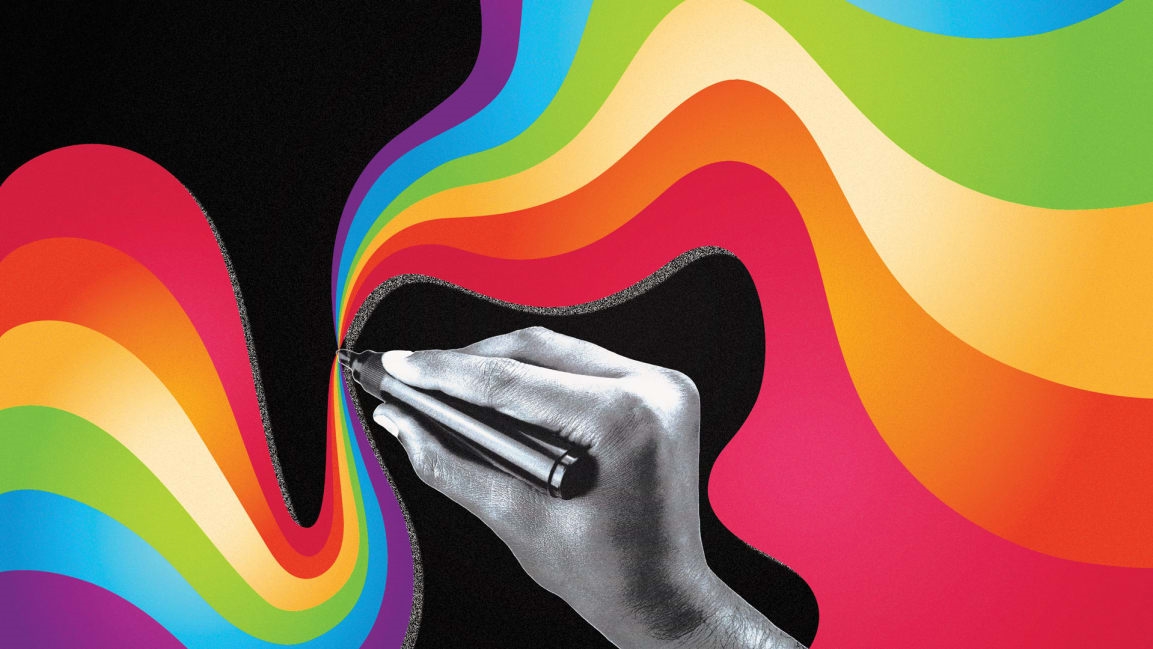How to thwart the robots: unabashed creativity
Let’s face it, the robots are coming for our jobs. Artificial intelligence expert Kai-Fu Lee writes in his recent book AI Superpowers that as many as 40% of professions will be automated in the next 15 years.
This change will bring a lot of good. Automation will take over lots of tedious, mind-numbing, or dangerous chores that few people enjoy doing. But the transition will be disruptive and some jobs will be safer than others. Among the safest professions, Lee says, are creative ones.
The more creative our children are, the more secure they’ll be in their careers once they enter the workforce. What was once considered a “soft skill,” requiring nothing more than an occasional art class or coloring at the dinner table, has become the skill set that will ultimately differentiate us as humans, enable us to stand out at work, and give us an advantage against the algorithms.
That’s because no algorithm can replicate human creativity. In fact, creativity is antithetical to the way artificial intelligence works. We develop machine learning by feeding in data about the way people react in certain situations. The point of algorithms is to predict what most people will do and execute that expected action.
But what makes something creative is the unexpected. Creativity is looking at a situation many other people have faced and trying something entirely new. Whether the source of creativity is a mistake of the eye, influences from childhood manifested as counterintuitive insight, or a random mash-up of life experiences, we’ll never fully understand creativity’s origin, which is why we humans will continue to be its only source.
So when we talk about the future of labor and job security, we must focus on the opportunity (and responsibility) to help people develop their natural creativity and ensure that they’re equipped to solve problems that machines and algorithms cannot. This effort to build creative literacy–the ability to express your ideas and perspective creatively–starts in schools. And we are failing.
Around the world, schools focus too much on feeding students facts so they can pass standardized, multiple-choice tests. In the real world, such input-output tasks will be the domain of artificial intelligence systems. We’re teaching old methods and practices of problem-solving that computers are far better at, rather than developing the confidence and skills required to bring to life what you see in your mind’s eye.
We should be outfitting students to do what only humans can do. And I’m not talking just about becoming the next Andy Warhol or directing the next Star Wars. Successful future workers will use their creativity to put together an emotionally compelling video that helps make a sale better than a pricing algorithm ever could. Or brainstorm an employee engagement event that transforms the culture of a team. Or design a novel interface that becomes the next killer mobile app.
But we’re not giving teachers or students the necessary resources for developing creative literacy. Our team at Adobe recently surveyed 2,000 educators and policymakers around the world. More than half the teachers we talked to said they don’t have the tools, knowledge, or training to teach creative problem-solving.
At Adobe, we’re working with thousands of teachers globally to help. Our Education Exchange program provides free creative lesson plans that have been downloaded hundreds of thousands of times. We also made Spark, a tool that students can use to easily create videos, web pages, posters, and more, available free to schools. Many teachers are using these and other resources to help students develop creative literacy.
Some people believe we have to make a choice between teaching creativity and teaching “the basics” like reading and math. That’s the wrong way to look at education. In the modern classroom, we should develop creativity as a form of problem-solving incorporated throughout the curriculum. “By being creative in the classroom, it allows students to not even realize that they’re focusing on standards of learning that we must meet in a public school system,” said Paige Mitchem, an English teacher in Virginia. “They’re totally focused on this creative, fabulous project and only I, as the teacher, realize what I’m teaching them.”
Of course, teaching is a tough profession, and for all the teachers like Paige who have been able to weave creativity throughout their curriculum, there are many others who don’t have the time or knowledge to do the same. That’s why we can’t put the onus of solving this problem on our already overworked teachers. We need school districts, states, provinces, and nations to recognize the importance of teaching creative literacy and make it an important part of their mandated curriculum. Rather than measure teachers and their districts by their compliance to established doctrine and test scores, we should be encouraging creative literacy with new tools, materials, and expectations.
Of course, it’s not just the next generation that will be affected by automation. People already in the workplace are being displaced and more will be as artificial intelligence and machine learning gets more and more capable.
For workers who are threatened by displacement, developing the ability to express ideas in a creative way can help them evolve from a threatened job title to one with more security. Most of these workers won’t be able to stop working for a year or two to go back to school. They’ll have to pick up new skills at night, on the weekends, and learn on the job.
Companies should make training and tuition reimbursement available to help workers through this transition time. If an employee can pick up the skills to move to a position that requires a little more creativity and creative problem-solving, she is more valuable and quickly pays back the cost of her training.
But we also need a new generation of creative tools that are accessible to anyone, not just professional designers or video artists. That need has caused us at Adobe to significantly change the way we think about our own products, including how we design them, how customers learn to use them, and how we bring them to market.
We’ve started to put much more thought and effort into the experience of people who are new to our tools. If you’re not a designer, but you have an idea for a graphic that will really make your next work presentation pop, what will your experience be when you first open Adobe Illustrator? If you have a story to tell, how can you create a video quickly, without having to go through the steep learning curve required by a pro tool? Much remains to be done in this area, but nothing is more important to me, because to democratize creativity, we have to democratize creative tools.
Ultimately, I’m convinced that the development of artificial intelligence will be a good thing for humankind. Automation will liberate us from the mundane and enable us to focus on more engaging, creative, and fulfilling work. We just have to prepare ourselves and our children for the future. And we have to start now.
Scott Belsky is Adobe’s chief product officer and executive vice president, Creative Cloud. He is the author of The Messy Middle: Finding Your Way Through the Hardest and Most Crucial Part of Any Bold Venture, and he is participating in the World Economic Forum annual meeting in Davos, Switzerland, this week.
(46)



